This was a tryout for the idea of a live music bike ride and it felt like a real success. I would like to take it further by publishing the ride for others to follow but of course it’s important to consider what worked, what didn’t and fine tune the plan.
First the Music
This was a very British enterprise because our country has a rich supply of small-scale regular music events. I’ve often thought this was a result of the alcohol licensing laws which, until quite recently, have tended to concentrate drinking into a short period between 8pm and 10:30, an ideal time for putting on a show. We also have a lot of people packed into a small island, so distances are short. The Folk Music Map does not currently show many other areas where you could rely on live folk music every night of the week, within cycling distance of each other, although there may be some opportunities in North America.
Folk Clubs in Britain are diverse, from informal singarounds to highly organised concerts. So it’s important to pay attention to what’s on at the different clubs on your route. One of the events on this route, the Cross Keys Acoustic Jam in Knaresborough, is a regular informal jam session in a comfortable and attractive pub that specialises in live music. So every week you count on a friendly welcome and some decent communal music-making. If you are a musician you will be very welcome to play along or perform some music solo.
The other four clubs all run a mix of singers nights and guest nights and we were lucky enough to have two of each. Singers nights are pot luck, you may get an amazing variety of highly skilful singers and/or players or it may be a quiet evening including some novices or others whose enthusiasm is greater than their skill. But either way people are usually very welcoming and if you are a musician you will have a chance to play yourself.
Guest nights will usually have a full audience (both the Topic and Bacca Pipes clubs were standing room only) and a guarantee of some good entertainment, especially with performers of the calibre of Jez Lowe and Kimbers Men. If you want a chance to play yourself you need to contact the club ahead of the date and make sure you are there very early to book a floor spot, even that is not guaranteed.
I am very familiar with all this so It was interesting to have Olivier along, especially as his English is not strong. He found it quite difficult to follow the singing and song introductions (often in strong Yorkshire or other regional accents) and he felt he would have enjoyed more instrumental music which he had expected from his experience of folk music in France. He particularly enjoyed the Acoustic Jam session because the atmosphere and surroundings were very enjoyable as well as some skilful banjo and guitar playing. So if you are not a fluent English speaker this ride might not be the thing for you.
The other thing that became clear to me from Olivier’s presence was that, whereas his experience in Belgium, France and Italy had led him to expect a regional culture based very heavily on food, with tourists seeking out markets and staying at farms that serve up meals based on specialist products, here in Britain we have a very rich culture of live local music (whether it’s folk music, choirs, brass bands or whatever) as well as a lot of interest in small scale local beer production. We are not a nation of foodies, although increasingly you can get very good, and varied, food in Britain.
So my advice for anybody planning to follow a route like this is to check what’s on at the clubs you will visit that week to see whether you’ll get an interesting mix. If you are not a performer yourself, you may prefer to look out for guest performers on most nights. If you are a performer take the trouble to let the organiser know you are coming and you will get a warm welcome (but it’s OK to just turn up).
The Cycle Route
If you have not cycled long distances in Britain then you need to know that conditions are highly variable. There are dedicated cycle routes, usually part of the Sustrans National Cycle Network, but they are not consistent, you may be riding on a broad tarmac track or quiet country lane or you may be dealing with a rough track and some awkward obstacles.
Nevertheless Britain is a very rewarding place to cycle, the scenery is usually varied, there are lots of interesting places along the way and plenty of cafes to refresh you. This is particularly true in West Yorkshire where the terrain is hilly but not extreme, the scenery beautiful, and there is a lot of rural and industrial history.
The rides, around 30 miles a day, are planned to be manageable for somebody who cycles enough to keep moderately fit but is not used to cycling long distances. Wednesday is a less arduous day to have a bit of a rest in the middle of the week.
I have planned the route to be easy to ride and on quiet roads or tracks as far as possible and I think it’s pretty successful. Most of the way you’ll be able to relax and enjoy your surroundings. However you can’t avoid a few steep hills (walking up is allowed :o) and there are some sections of busy road.
I’ve modified the route to take out a few nasty hills and an uphill section of road that was too busy, but of course it will always be a compromise.
If you are riding with traffic it is important to be visible, so wear clothes that can be seen (hi-viz isn’t absolutely necessary but black is a bad idea) and ride defensively.
The UK government guidance for safe cycling says that you should ride between 0.6m and 1m from the edge of the road where vehicle drivers can see you and realise that you are sharing the road so they pass you with more care. if you ride right at the edge of the road you will be ignored and drivers will tend to pass you too close.
BUT there is an important exception to this rule when you believe that conditions make it dangerous for vehicles to overtake you. This might be because of oncoming vehicles, parked cars or a constriction such as a pedestrian refuge in the centre of the road.
For these situations you are advised to take the ‘primary’ position in the centre of your lane so it’s clear that it’s not possible to overtake. In the USA they say “take the lane”. Defensive riding takes confidence but once you are used to it you will see that drivers give you more space and you are safer.
And something I learned on this trip is that you should avoid riding on main roads during the rush hour, especially the evening. That’s mainly before 9am and between 5 and 6 pm although in big cities it’s a longer period. On the last day of the ride we finished by climbing over the big hill between Calderdale and Airedale.
We set off around 4:30 and for the first part of the uphill ride the traffic was light and drivers were careful. But in the later part of the climb and the downhill section we were passed by a lot of people driving too fast and carelessly and it was quite scary. Commuters on rural roads are too fast, too casual and too aggressive, they drive that route every day and just want to get home.
So a good rule is to make an early start and try to get to your destination before 5pm. That’s especially important if you want to get yourself clean and changed and have a meal and maybe stroll around a bit before the evening entertainment starts.
Along the way
Bill Bryson recently said that, in Britain, you are never more than 5 miles from something significant. That’s certainly true of this ride and I hope the individual ride reports show this. In fact one of our problems was not to spend too much time exploring the different things we encountered along the way.
Halifax was a high point of the ride because it has so much interesting history and it’s a manageable sized place. No doubt Bradford, being a big city with a lot of history, would have yielded more to look at but when you are cycling the most important thing is not to go too far from the route.
Your enjoyment of the ride will be enhanced if you take a little trouble to find out about the places you will visit, I’ve tried to indicate in the map and reports some of the sights but one of the most enjoyable things was just finding stuff along the way, like the unassuming shop front of Clockhouse Antiques which concealed a treasure trove.
Also there are places that would have been good to explore, like Riddlesden Hall or the Harlow Carr Horticultural gardens in Harrogate, but on a bicycle the ride is king and you don’t have time to justify extensive visits. So less complicated gems, like Bolton Abbey or Timble are perfect as a 15 minute stop is sufficient to take them in.
The Inner Cyclist
Food is fuel, but it’s also a great source of pleasure and a good cafe gives you a comfortable place to relax for a while and rest your legs. We were able to find good places wherever we went although the style of cafe or restaurant and what was on offer varied greatly.
The important thing is that there are enough cafes along this route to meet your needs and some, like the Saltaire Canteen, or the Organic Cafe in Hebden Bridge, were a real treat. I like my one good cup of coffee a day and that was a bit of a challenge, only on the last day at the Organic Cafe did I get something that matched my expectations, a rich strong flat white coffee to go with my cake.
Another reason for starting your cycling day early is that cafes in Britain have a disconcerting habit of closing mid-afternoon. So you have more choice before 3pm.
In the evening we managed to find somewhere to eat each day early enough to get to the folk club for 8pm. Otley Folk Club was easiest as Kork’s Wine Bar had a restaurant as well as a great performance space.
In Skipton we went to the French-style Bistro des Amis that was OK but I’d try somewhere different next time. In Knaresborough the So! Bar did classy pub food cooked to order (so a bit of a wait) and I’d go again.
The classic Bradford curry at the popular and basic Kashmir restaurant, just round the corner from the Topic Club, was memorable and cheap although Olivier didn’t find it to his taste. Indian food is as British as fish and chips these days but our European neighbours tend to be wary of hot spices.
In Keighley we had been aiming for an Italian Restaurant, Amici, that turned out to be booked solid every night (so book ahead), but the Turkish place next door was great.
Breakfasts are always the challenge on a cycling tour and I’ve written about this before. The Full English (or Scottish or Welsh) breakfast seems to be obligatory in bed and breakfast places, sometimes it’s good, often it’s nasty and always it’s not the best thing to start a day’s cycling.
I blame the tourist authorities, we stayed once at an excellent B&B in Argyllshire where the owners went out to work during the week and left us a really excellent cold buffet breakfast which was ideal. But apparently they had been criticised by the Scottish Tourist Board who claimed that guests insist on the full fried breakfast every day.
Anyway we had a reasonable mix. The Town House in Skipton started the week with a really badly cooked fryup, but Ebor Mount in Knaresborough had some choice and we had excellent kippers. The Black Horse in Otley did a well-cooked traditional breakfast and you had a variety of eggs and in Bradford we had a completely free choice at the Ibis budget hotel as breakfast was not included in the very cheap price. So Olivier stayed in for croissants and fruit and I went out for coffee and a pastry.
A Bed for the Night
We managed to find some affordable accommodation and, apart from Skipton where we shared a twin room, we had single rooms for £20-£50 a night. The Town House was basic and a bit damp-feeling and with a plastic-backed undersheet on the bed, acceptable if nothing better is available.
Ebor Mount in Knaresborough was comfortable and well-run. The Black Horse in Otley, a big old pub/hotel, was welcoming, but the rooms were not well thought out, strange lighting and you need earplugs for the traffic noise.
The Ibis Budget Hotel takes the prize for value, style, good service and everything you need with nothing you don’t (except perhaps the separate plastic undersheet that I removed straight away). It confirmed my sense that the Great British Bed and Breakfast is not as reliable or affordable as it should be and budget hotels are increasingly successful in giving people what they need without pointless frills. For an overnight stay I almost always choose the latter if it’s available.
Of course there are other options these days, like the Warm Showers website for touring cyclists, and of course AirBnB. But whatever you choose you need to read between the lines. At least when cycling you get pretty tired so sleep can come pretty easily.
Your Bicycle?
You don’t need a highly specialised bike to ride this route but there are some things to think about. Luggage is always the first consideration when touring, on the one hand you need to pack for lightness and be well organised, on the other hand it’s important to be ready for the weather and be comfortable when you are off the bike. And it’s very important that your bike should carry everything conveniently. So a good rack, sturdy waterproof panniers (an inner liner can be used to keep things dry if the outer bag is not waterproof) and NEVER even think about using a backpack for a long tour like this.
You need a wide range of gears, which you will get on most modern bikes except some city bikes. A very low ‘granny gear’ is very welcome on hills later in the day, but high gears are not so important.
Brakes are vital on hilly terrain, make sure yours are effective and properly set up. Mudguards are pretty well essential for touring in Britain, unless you enjoy ending a wet day sprayed with mud.
You need lights, at least one evening required a ride between hotel and folk club and in very bright sunshine, which affects people’s vision, I found that there were places under dark tree cover where you suddenly become invisible to other road users, so I used my flashing front and rear lights if I thought there was any likelihood of that.
And a saddle that suits you (not a good idea to start a tour with an untried new saddle) plus some anti-chafe cream or Vaseline to protect your tender parts – use it religiously from day one, once you are sore it’s too late.
Of course a recumbent bike, as we used, solves pretty well all comfort problems but I realise it’s a rather specialised and expensive thing that is not for everybody.
Last thoughts
So I’m feeling positive about promoting this as a worthwhile form of independent, sustainable tourism focused on enjoying cycling, history and live music. We were lucky to have good weather, although there was a little rain most days, but I feel that you have a good chance of a good trip most weeks between early May and late September. Just come prepared for any weather as Britain is not predictable.
I’ve updated the Google Map of the route and created a permanent web page for the route with the main information needed, including detailed online maps and gpx tracks and this series of blog posts will form a kind of guide.
I don’t propose to organise any rides myself but I’m very pleased to offer advice if it’s requested and all the information you need about travel, accommodation and folk clubs is available on the web.
Tags: Bicycle holiday, Cycle touring, Cycletouring, Folk Music Ride, HP Velotechnic Grasshopper, Yorkshire

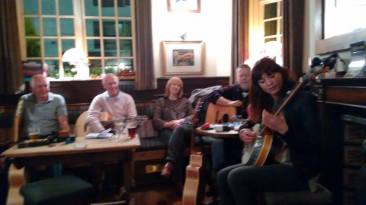
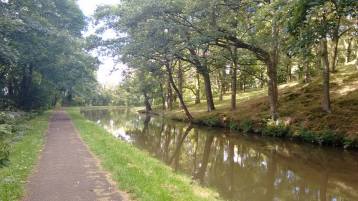
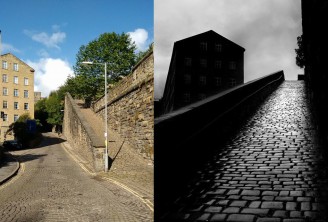
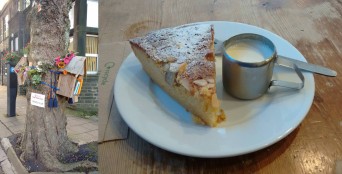

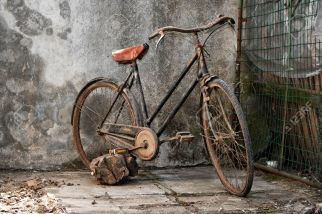

Leave a comment